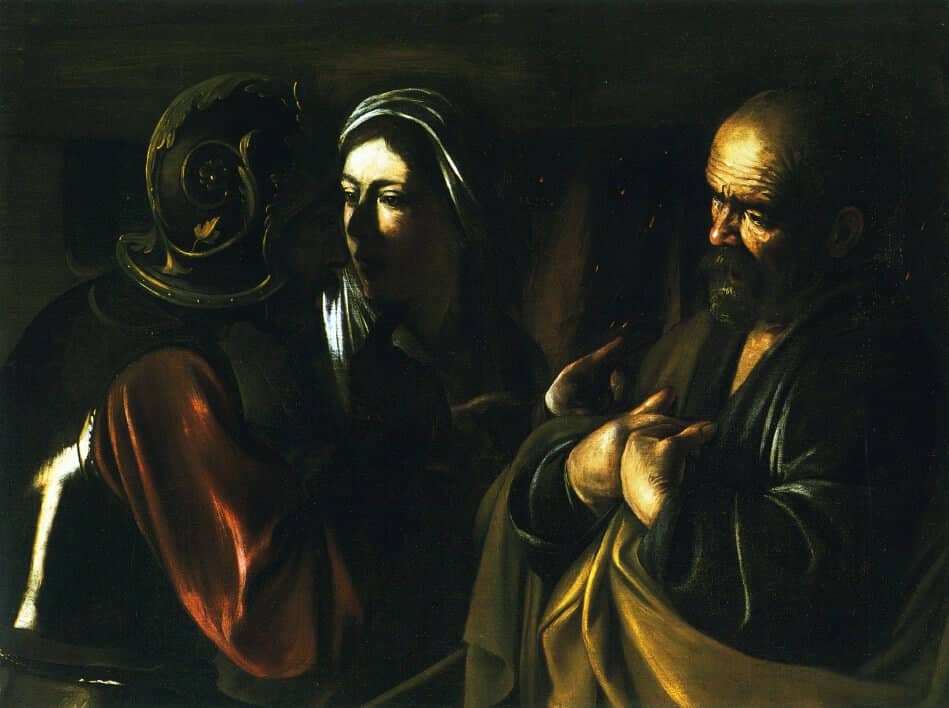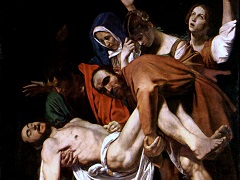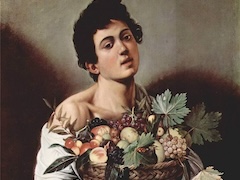Denial of Saint Peter, 1610 by Caravaggio

The episode from Mark XIV:66-72 in which Peter, soon after Christ's arrest, is challenged by the serving maid of Caiaphas, the High Priest, to admit his identity as one of Christ's disciples,
was not often depicted during the Counter Reformation. But its dramatic possibilities clearly appealed more to Caravaggio than the more popular but also more sentimental subject of the
penitence of St. Peter. The flames leaping up in the background cast intense reflections on the saint and his accuser and thereby add an unusual dimension to Caravaggio's dramatic chiaroscuro.
Only in The Taking of Christ and the Madonna of Mercy do we equally find exceptions to his normal practice of using only a light source external to the composition.
Yet, ironically, it was just such a use of an internal light source - a candle, a fire or a lantern - which frequently characterized the work of Caravaggio's numerous disciples.
The Denial of St. Peter is not to be confused with a multi-figure composition referred to by Bellori, which is still in the Sacristy of San Martino and which is
clearly by another hand. The extremely fluid and energetic handling of the present picture could suggest a very late dating of 1610. The picture was formerly in the
Caracciolo collection, Naples.
















